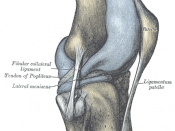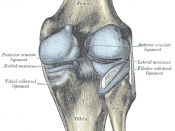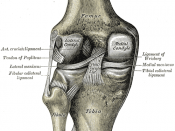Discussion
Fifty four subjects were measured performing two different vertical jumping styles; the static jump (SJ) and counter movement jump (CMJ). The counter movement jump involved pre-stretching whereas the static jump required a 3 second 90ú flex at the knee joint. During both these jumps both arms were held stationary behind the subjects back. This is essential because arm swing enhances kinetic energy and consequently increases jump height (Lees, Clercq and Vanrenterghem, 2004).
When muscles contract concentrically force is placed on the bone via tendons and movement occurs at the joint. This contractile force can be increased if the muscle performs a lengthening contraction before the commencement of the muscle shortening contraction. The SCC is identified as an eccentric contraction followed immediately by concentric contraction. The series elastic component (SEC) is thought to be the mechanism by which the SSC operates (Hall, 2003). The stretch shorten cycle is likely to account for the 11% difference between the SJ and CMJ means.
When performing the CMJ the concentric forces acting on the hip, knee and ankle joints had to apply more initial force when compared to the initial force required for the SJ, (Bobbert, Gerritsen, Litjens, Soest, 1996, cited in Walshe, Wilson, Ettema, 1998). During the SJ the concentric forces only work against body weight. However during the CMJ the concentric forces must work against body weight and the eccentric forces being applied. Therefore the need for greater initial concentric contraction is required to combat these forces during the CMJ. Relationships between the maximum vertical velocities and jump heights for both jumping techniques can be seen in figure 2. In accordance with the above theory they are highly correlated; 0.959 and 0.985 respectively.
Fast-twitch (FT) muscle fibres are important for athletes who must create powerful...


